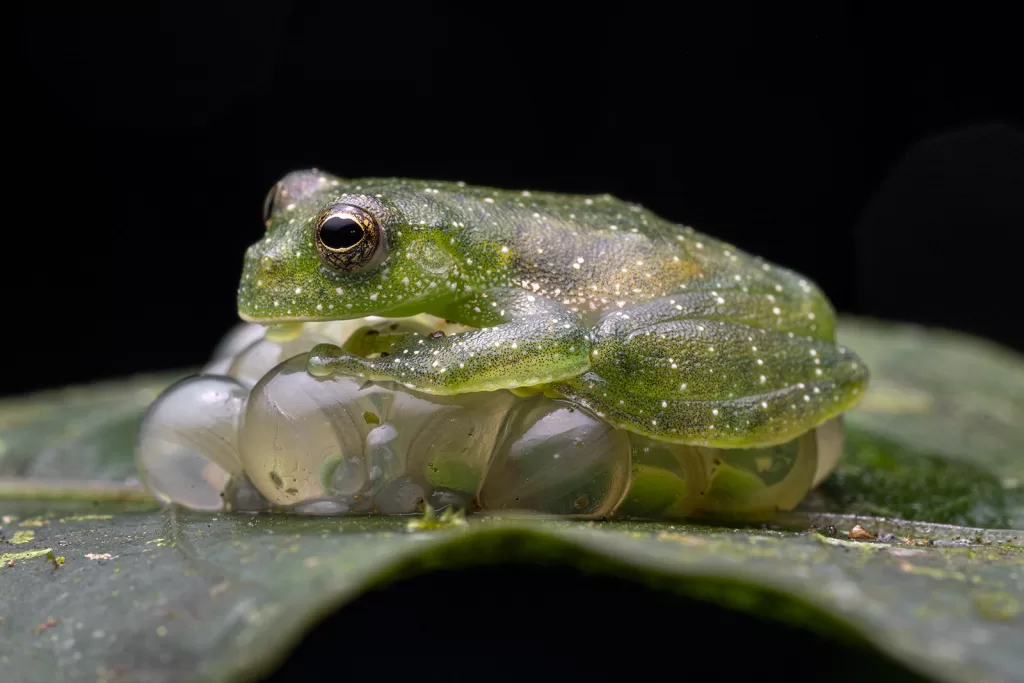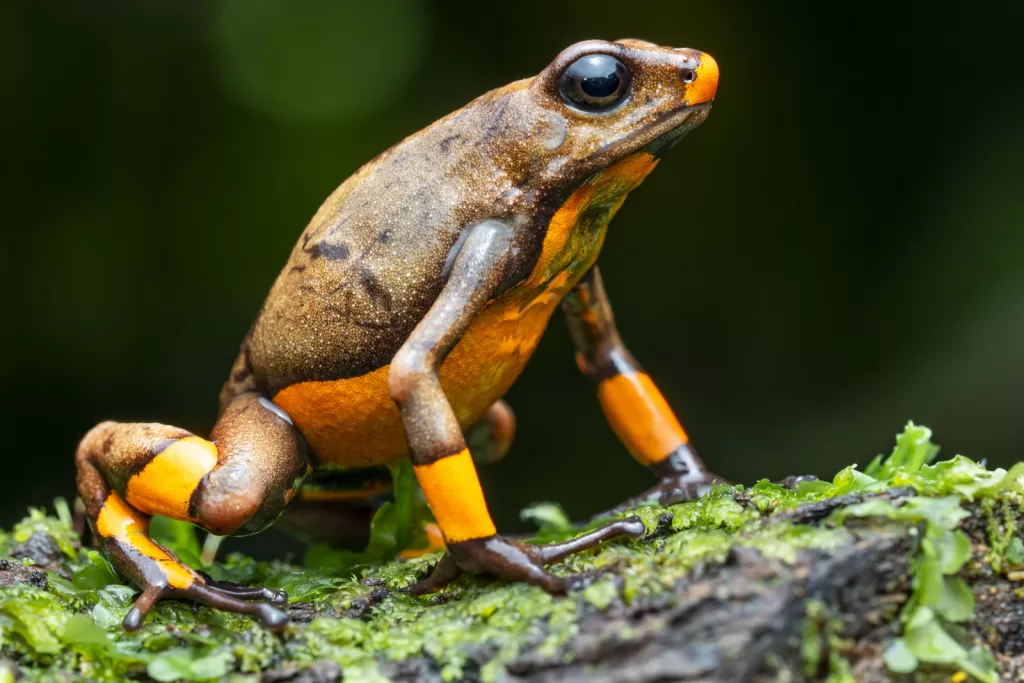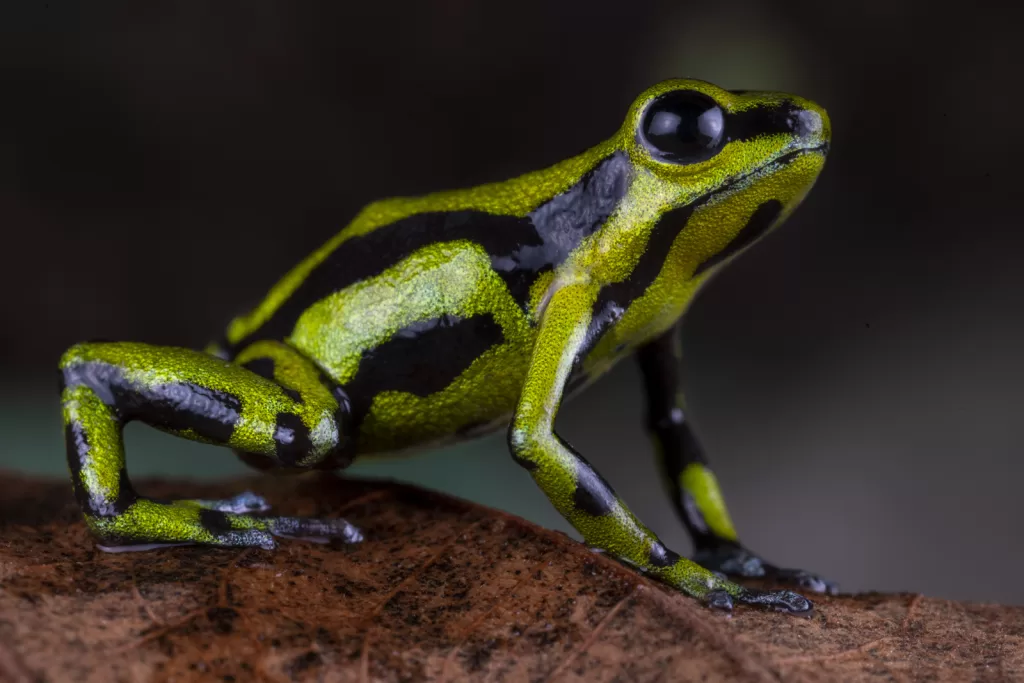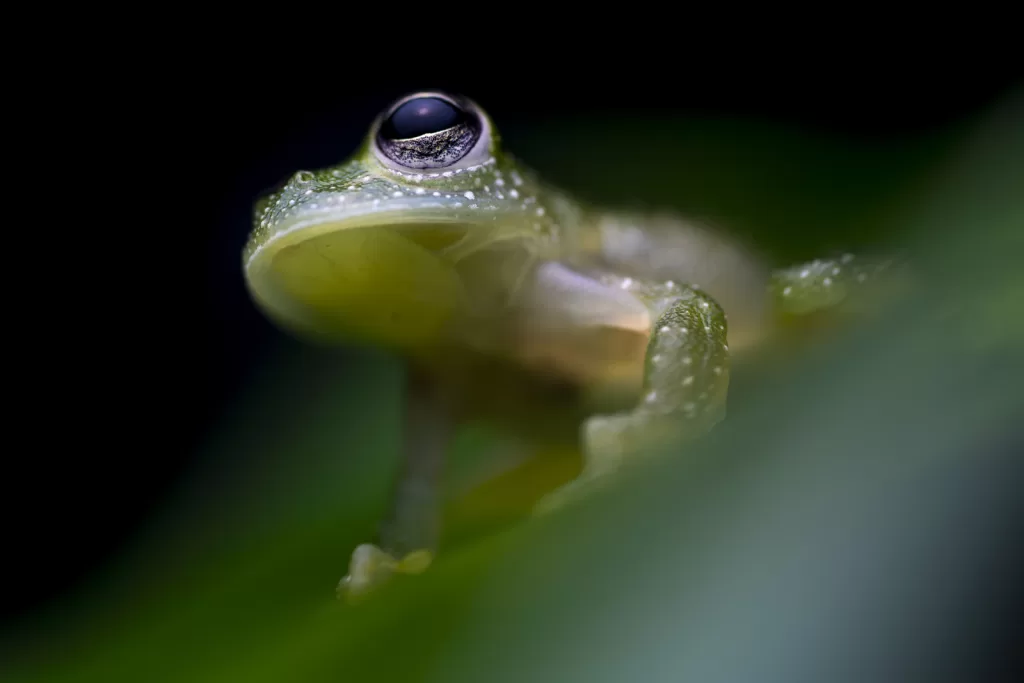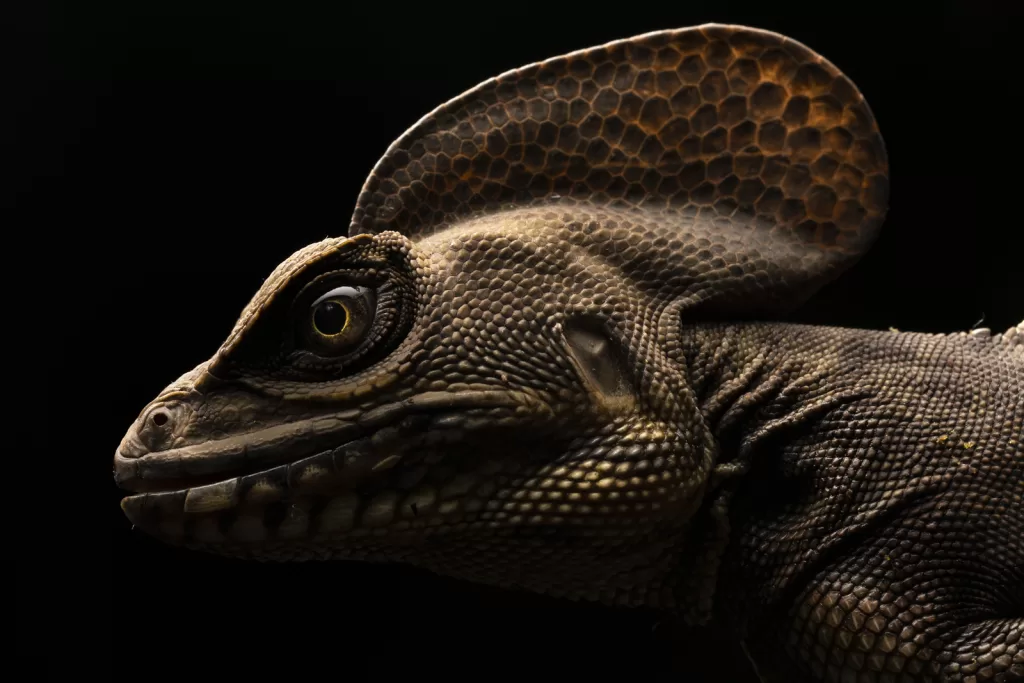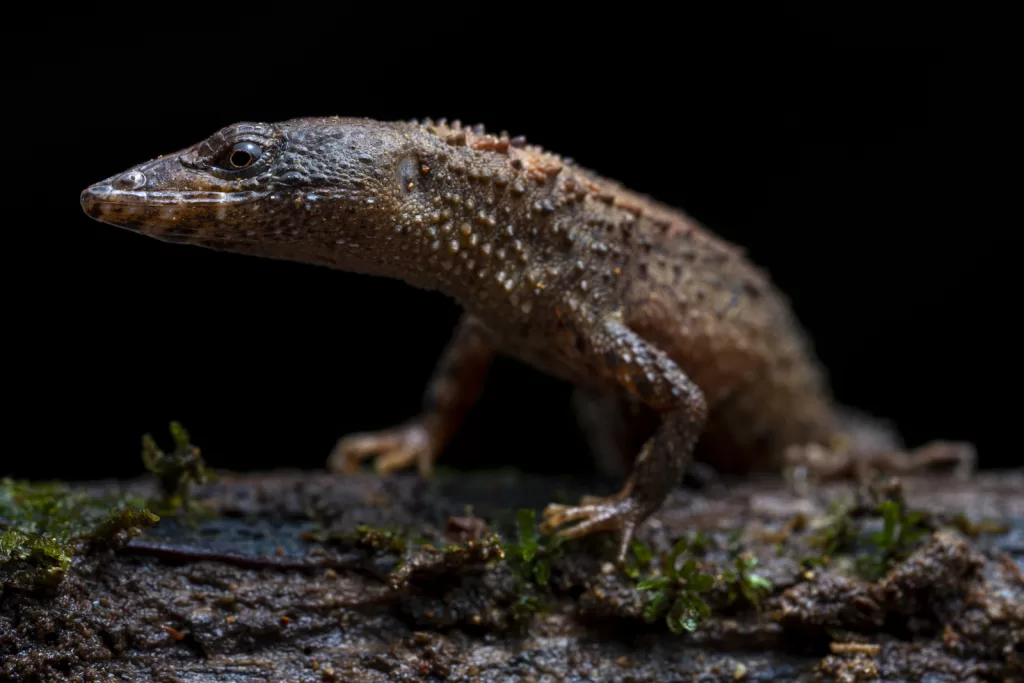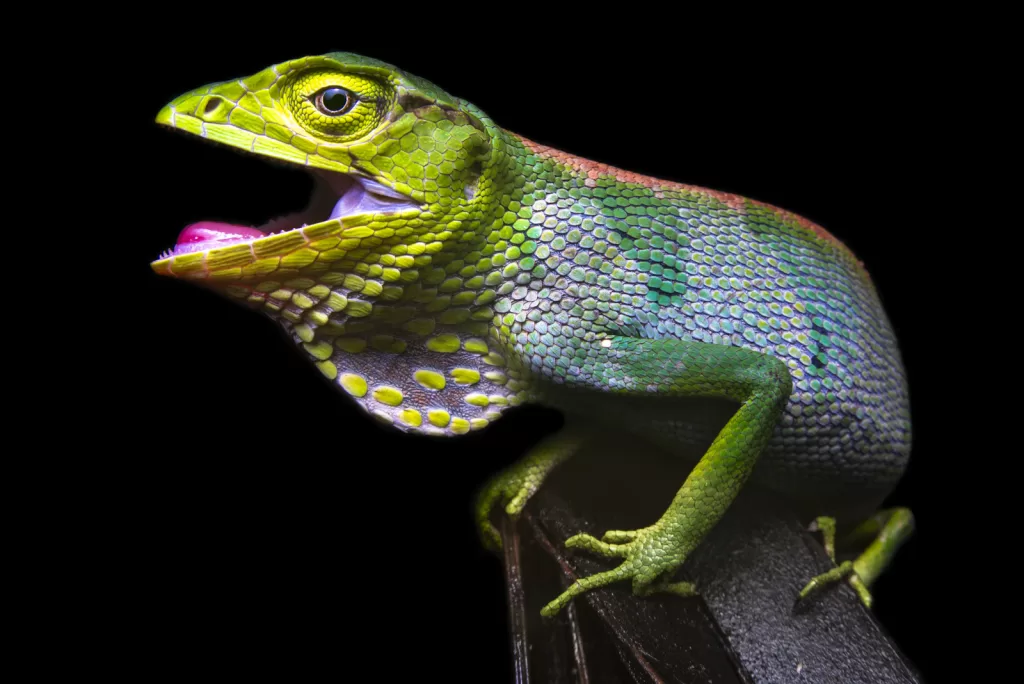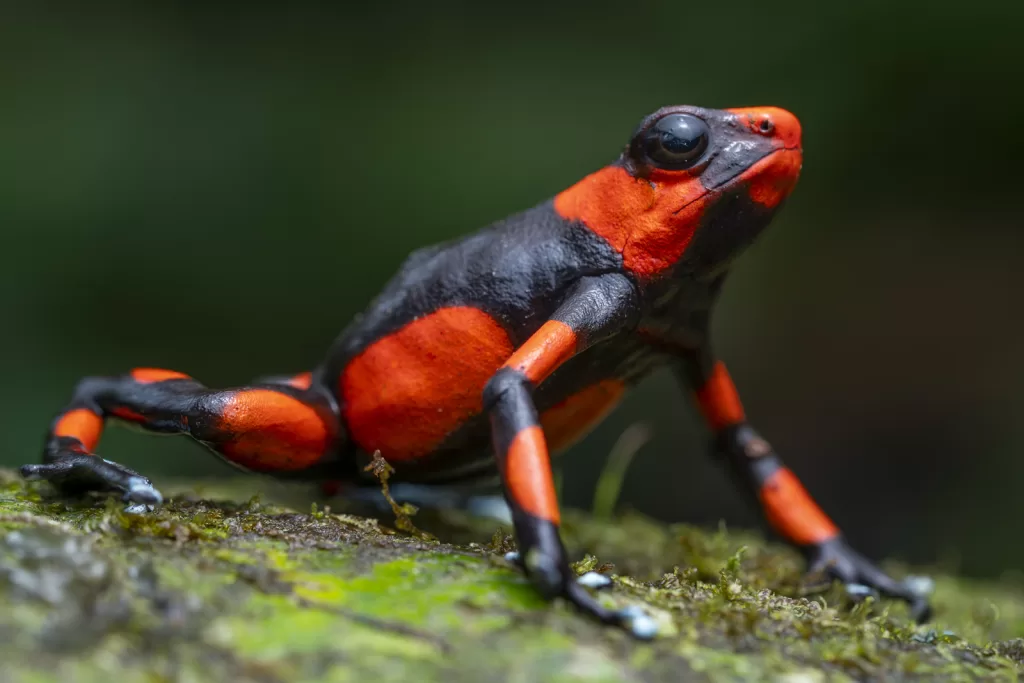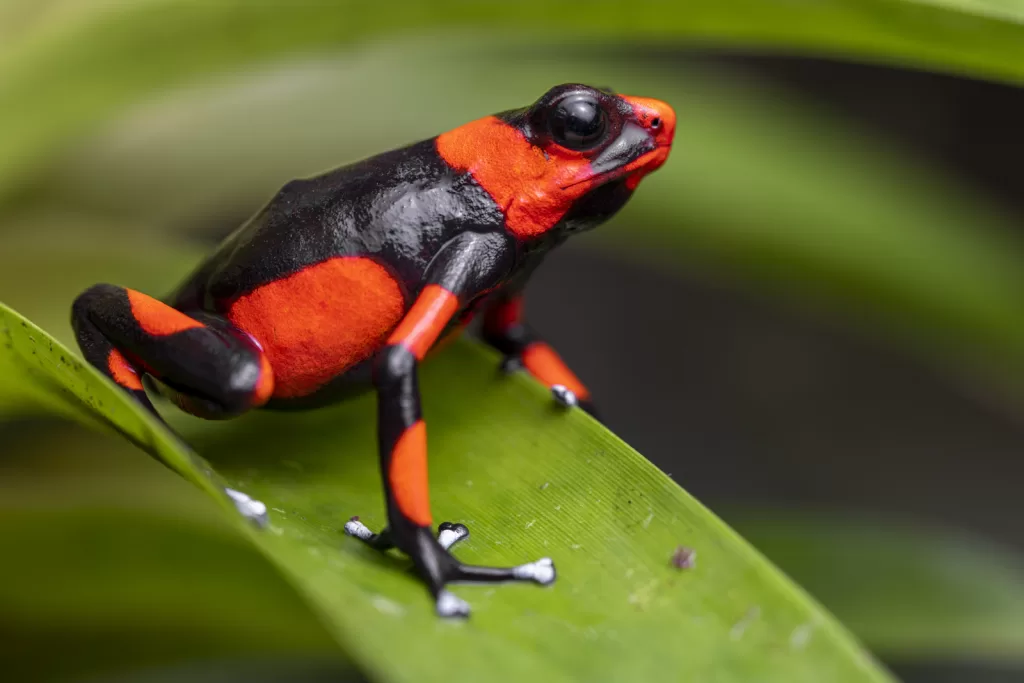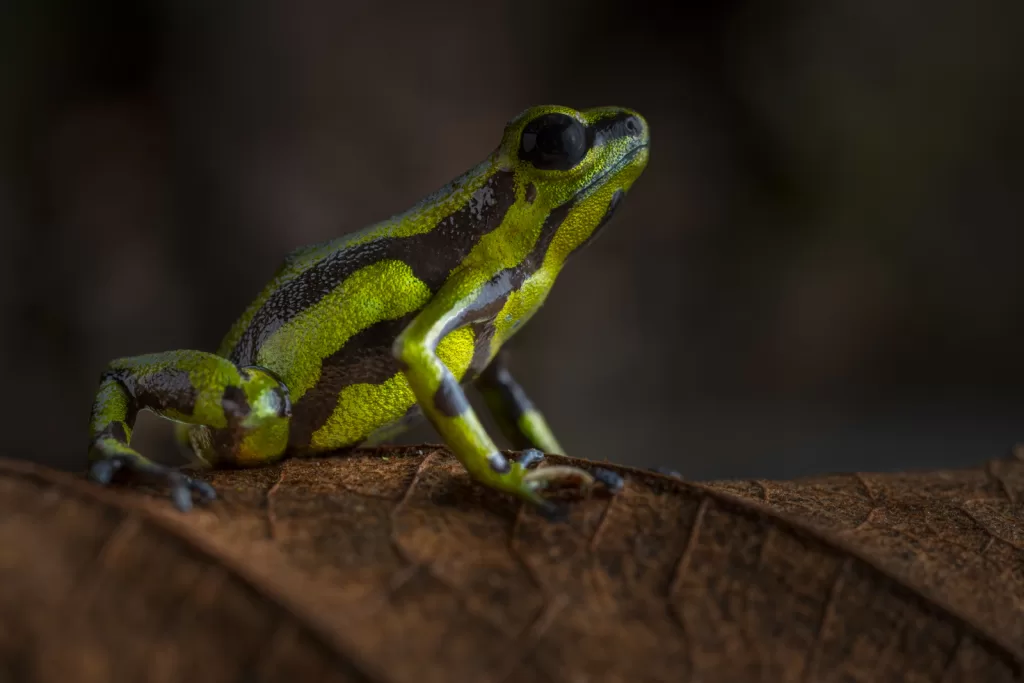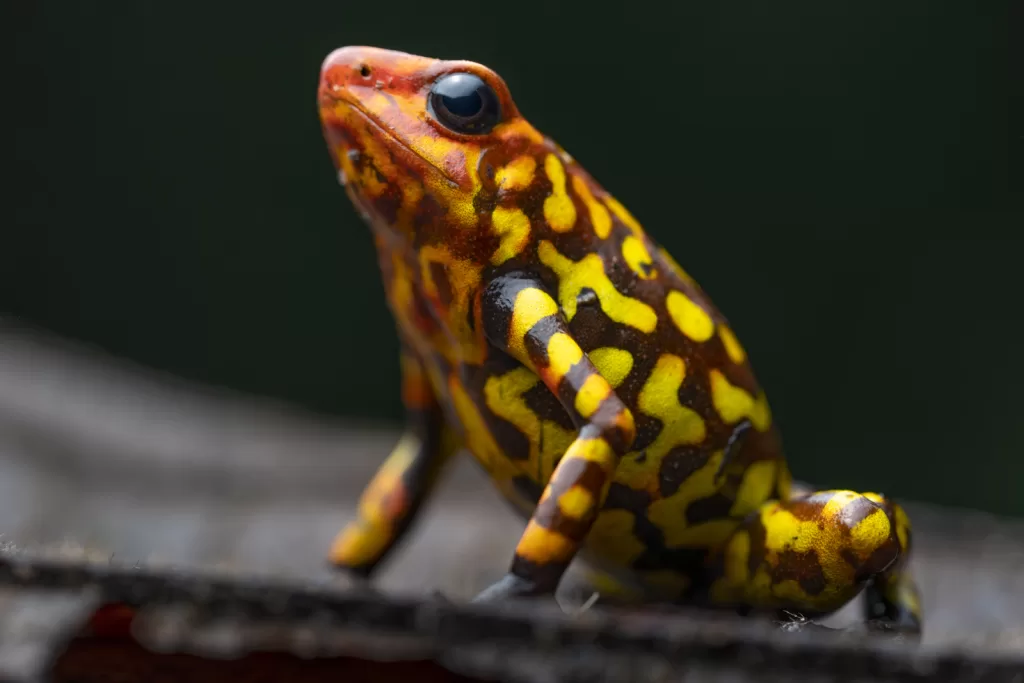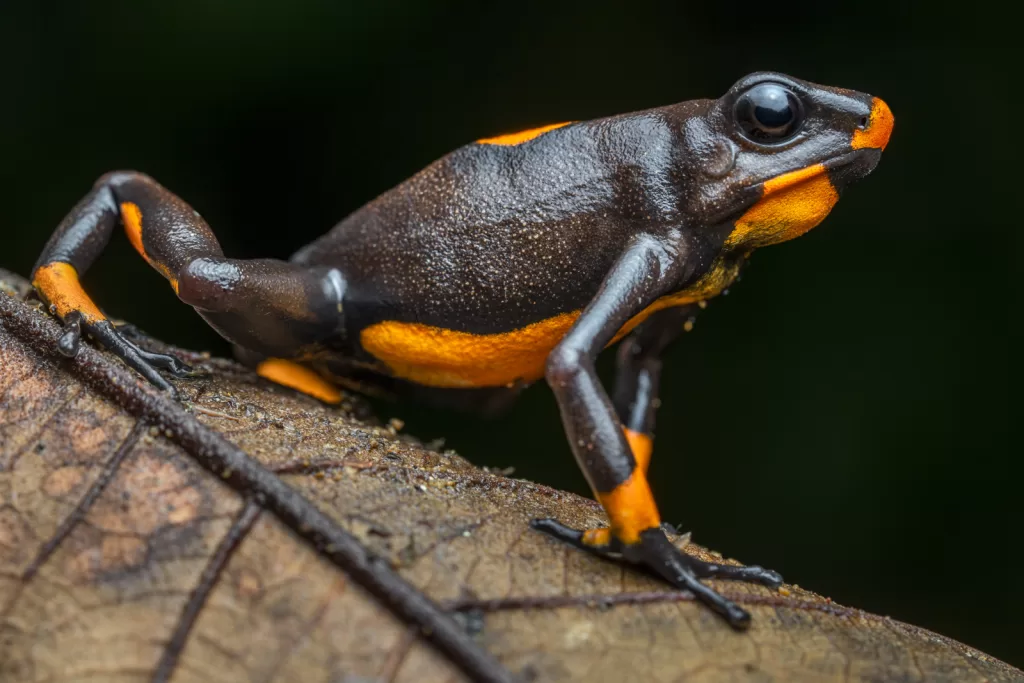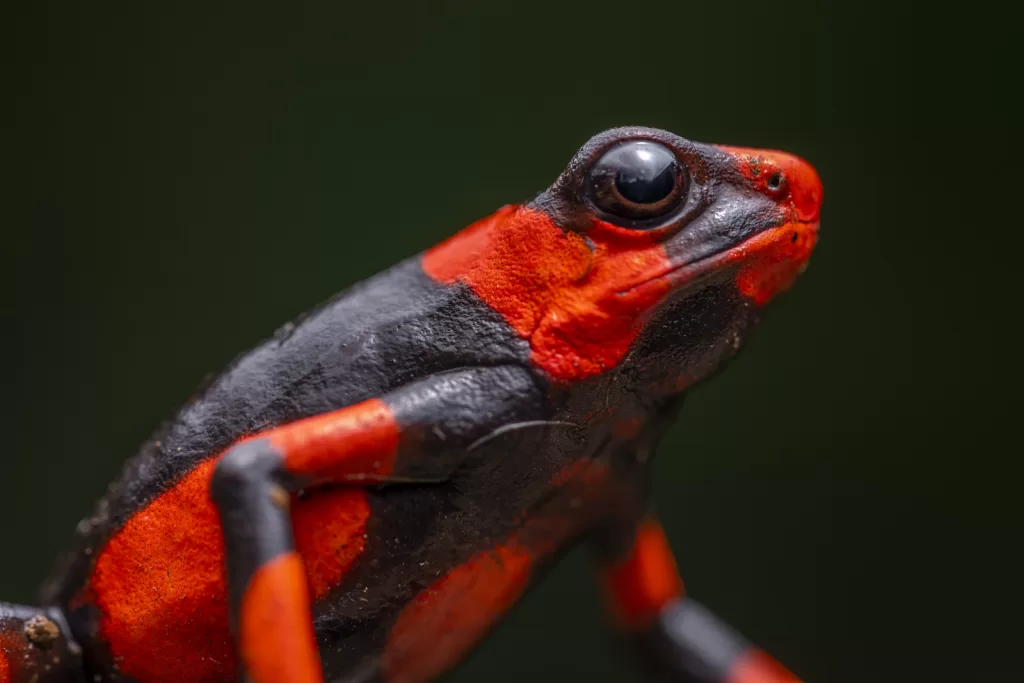Colombia Herping Tour – Dart Frogs
Scroll down
About the Tour
Embark on a unique herping expedition through Colombia’s most biodiverse corners with Photo Wildlife Tours. During this journey, you will explore tropical rainforests, cloud forests, and nature reserves in search of some of the most fascinating creatures on the planet, from vibrantly colored dart frogs to snakes and lizards hidden in the foliage. With exclusive access to remote habitats and expert guidance, each day will offer you the opportunity to capture spectacular images and experience unforgettable encounters with the country’s incredible wildlife. Get ready for an adventure full of discoveries, nature, and photography!
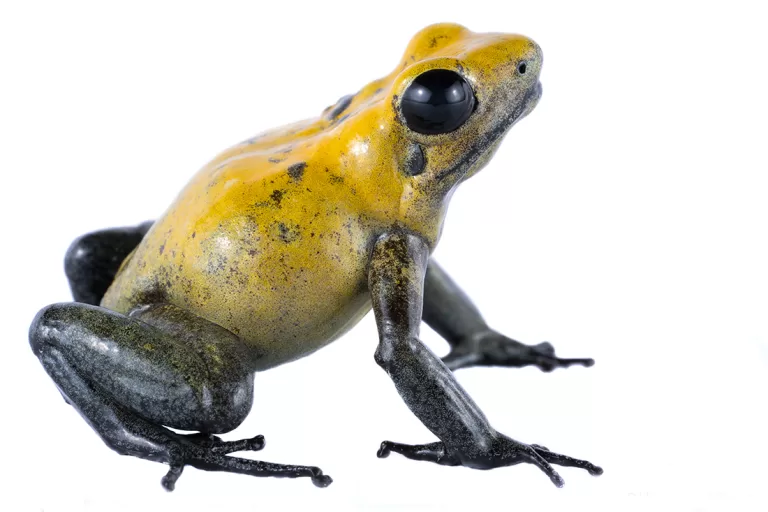
Date
All year
Activity level
Medium - Hard
Available spaces
Since 1
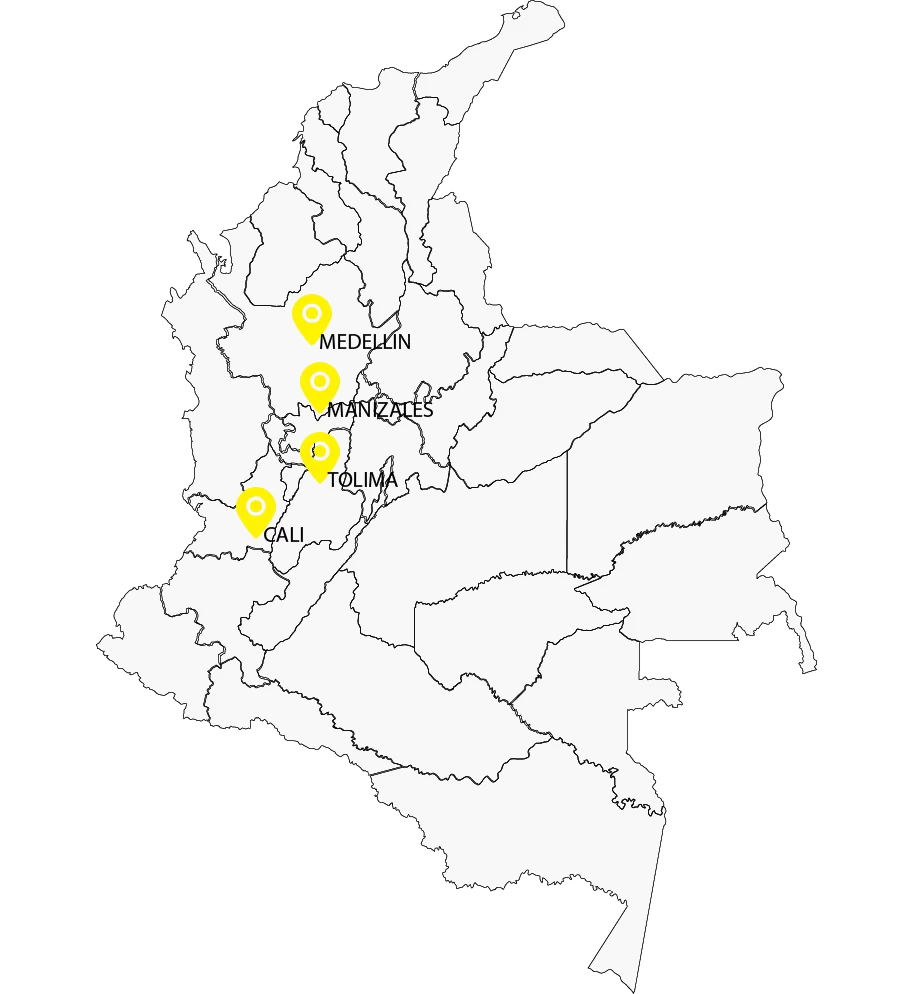
Itinerary
Day 1: Arrival in Pereira
Arrival in Pereira (Matecaña International Airport). A representative from Birding & Herping will be waiting for the group, and from there, they will be transferred to the hotel.
Night: Hotel Soratama.
Day 2: Santa Cecilia and Night Exploration
After breakfast, the group will travel for three hours to the influence area of Tatamá National Natural Park in the Santa Cecilia district. In the afternoon, we will search for the first dart frog species (Oophaga histrionica), Bull’s Eye Morph. After dinner, we will take a walk along the San Juan River in search of snakes such as (Leptodeira septentrionalis), (Sibon nebulatus), (Phrynonax shropshirei), arboreal frogs such as (Smilisca phaeota), (Boana rufitela), and glass frogs (Hyalinobatrachium aureoguttatum, Espadarana prosoblepon).
Night: Hotel Piedras.
Day 3: Private Reserve and Second Night Outing
Early in the morning, we will walk for two hours to a private reserve in the buffer area of Tatamá NNP; our target will be the second dart frog species of the tour (Phyllobates bicolor), considered the second most poisonous frog after Phyllobates terribilis. We will also have the opportunity to observe the poisonous frog Andinobates fulguritus. After dinner, we will go on the second night outing.
Night: Hotel Piedras.
Day 4: San Cipriano Reserve
After breakfast, we will head to the San Cipriano Reserve. On the way, we will stop at the Yotoco Forest Reserve, considered one of the best-protected cloud forest patches on the eastern slope of the western Andes range. This reserve has become an important refuge for various fauna and flora species in Valle del Cauca. Our main objective there is the red morph of the Ruby Poison Frog (Andinobates bombetes). Another species that may be observed during the journey is the Eyelash Viper (Bothriechis schlegelii).
After this, we will travel for two hours to the San Cipriano Reserve. To reach the San Cipriano community, we will take a traditional transportation method known as “Brujita,” consisting of a motorcycle and a wooden platform adapted to move along the train tracks. We will check into the San Cipriano Foundation reserve, have dinner, and prepare for another night outing.
Night: San Cipriano Foundation.
Day 5: La Venteadora Waterfall and Night Exploration
We will take a hike to La Venteadora Waterfall, searching for species such as the Rocket Frog (Silverstoneia nubicola) and the Spiny Lizard (Enyalioides heterolepis). We will visit nature trails, cross waterfalls, and crystal-clear rivers within the tropical rainforest. As we progress, we may find the smallest poison frog (Andinobates minutus) and the Golden-striped Frog (Phyllobates niche sp. nov). After dinner, we will continue searching for lizards and snakes.
Night: San Cipriano Foundation.
Day 6: San Cipriano
We will take a hike along an ecological trail to the Cascade of Love. Our main target is the Lachesis acrochorda viper, but we may also find other snake species such as (Micrurus dumerilii), (Porthidium nasutum), (Oxybelis brevirostris), as well as lizards like (Enyalioides heterolepis), (Anolis notopholis and A. chloris).
Night: San Cipriano Foundation.
Day 7: San Cipriano
Early in the morning, we will head to the Cisneros area. There, we will take a short hike in search of the Anchicayá Dart Frog (Oophaga anchicayensis), walking uphill for an hour and a half through patches of forest, agricultural areas, and tropical rainforests. After lunch, we will drive two hours to Queremal.
Hotel: El Campanario.
Day 8: Anchicayá and Transfer to Cali
On this day, we will travel to the Anchicayá sector (1 hour and 30 minutes) on an unpaved road. Then, we will hike uphill for three hours on a private trail in search of one of Colombia’s most special frogs, endemic and critically endangered: the Lehmann’s Poison Frog (Oophaga lehmanni).
After completing the expedition, we will transfer to Cali (approximately 2.5 hours).
Night: Hotel Hampton by Hilton.
Day 9: Return
A vehicle will be ready to transfer the group to Cali’s international airport, Alfonso Bonilla Aragón.
Featured sightings
USD:
Included
- Shared accommodation from Day 1 to Day 9.
- Private transportation.
- All meals from Day 2 until breakfast on Day 9.
- Local guides where required.
- Entrance fees to nature reserves.
Not included
- Alcoholic beverages.
- Tips.
- Travel insurance (we recommend having one).
- Phone calls.
- Laundry service.
- Personal expenses.
General tips
General Recommendations:
For a better experience, it is important to know a couple of factors which will facilitate your stay in Colombia:
- If you’d like to take home a couple of souvenirs, we recommend bringing a little extra cash in order to acquire these at the different locations we will be staying at (Local currency is the Colombian peso). We recommend exchanging around USD 200, or equivalent in your local currency, at the airport. Any other expense we recommend payments by credit card.
- Mosquito repellent.
- Sunblock.
- Hats.
- Flashlight (a headlamp is preferable).
- Bags to store wet clothes.
- Water bottle.
- Trekking shoes.
- Warm clothes for the Andes area.
Biosecurity Protocol and Species Handling:
- Boots must be disinfected with 4% hypochlorite and equipment with 70% alcohol before and after entering streams and trails.
- Only the guide(s) are authorized to handle species in the field.
Photographic equipment
As photographers, we know how challenging it can be to decide how much equipment to bring on trips, as we always want to pack everything to maximize the experience. Below are our recommendations for what type of gear to bring:
- Macro lens.
- Wide-angle macro lens (15mm or 24mm).
- Rain gear for equipment.
- Tripod.
- Flashes.
- Diffusers.
- Batteries.
- Battery chargers.
- Cleaning equipment.
- Plug adapter in case you’re using international chargers.
Clothing
The Choco region, also known as the Coastal Forest, has a warm and humid climate. We recommend bringing long pants, long-sleeved shirts or t-shirts made of lightweight, breathable materials to help with ventilation and to avoid mosquito bites, which can be quite bothersome, as the region is located between 100 and 800 meters above sea level.
tour leader
At Photo Wildlife Tours, we make sure to work with the best local guides—experts in wildlife, photography, and exceptional service. Our guides are carefully selected for their extensive knowledge and experience, ensuring a unique and educational experience. We also promote a strong ethic of respect and care toward animals, making sure all our tours are conducted responsibly and mindfully.
With us, you can trust that you’ll be accompanied by professionals who are fully committed to quality, conservation, and the enjoyment of nature.
Do you need more information?
- 593 98 904 9567
- [email protected]
- Quito - Ecuador
